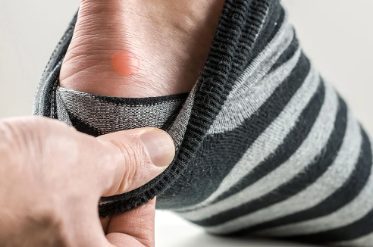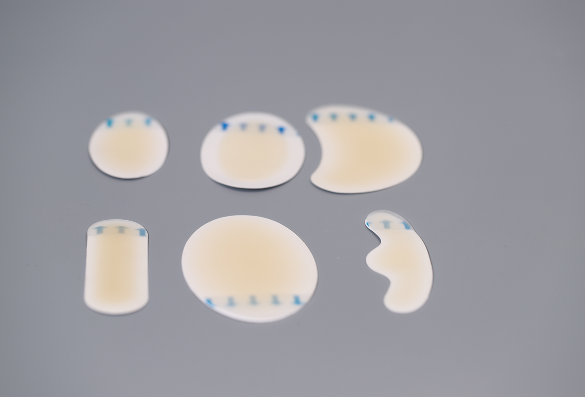Blisters on the feet are also a common problem in summer, and they usually occur when the feet move too much or when they wear ill-fitting shoes. After a blister forms, proper handling and therapeutic measures can help reduce pain and speed healing. This article will introduce the reasons why feet are prone to wear-through blisters in summer and how to treat them.
Why are feet more prone to blisters in summer?
1. Wearing inappropriate shoes: In summer, the temperature is high and the human body sweats a lot. It is necessary to choose breathable and light shoes, but many people will choose inappropriate shoes for convenience or beauty, such as shoes that are too big or too small, shoes that are too high or low soles, etc., will affect comfort and blood circulation of the feet, cause fatigue and discomfort of the feet, and increase the risk of blisters.
2. Increased activity: In summer, people like to do various activities outdoors, such as running, walking, climbing, etc. These activities will put a lot of pressure and friction on the feet, which will easily lead to the formation of blisters.
3. Dry skin on the feet: In summer, the temperature is high, the human body sweats a lot, and the feet are prone to lack water. If you do not pay attention to keeping the feet dry and moisturized, the skin on the feet will be overly dry and the risk of blisters will increase.
4. Improper maintenance of shoes: The temperature is high in summer, and the shoes are easy to breed bacteria. If you do not pay attention to the maintenance and cleaning of the shoes, it will cause the inside of the shoes to be humid and hot, and increase the risk of blisters.
Therefore, in summer, pay attention to choosing the right size of shoes, avoid wearing too tight or too loose shoes, avoid continuous walking or running for a long time, clean and maintain shoes regularly, and keep feet dry and moist, which can reduce the risk of blisters. If blisters have appeared, care should be taken to keep the blisters dry and clean, and avoid scratching the skin around the blisters to avoid infection.
How to prevent and treat it?
1. Keep dry and clean :
Try to avoid rubbing or scratching the skin around the blister until it bursts or heals. If the blister has burst, wrap it lightly with a clean towel or bandage to keep it dry and clean. This helps reduce pain and prevent infection.
2. Can be used Hydrocolloid Blister Plaster :
can use Hydrocolloid Blister Plaster, it is made of hydrocolloid material, soft texture and good fit, an ultra-thin design, is more docile to use, smooth surface, and is very wear-resistant, can protect the skin well, if it has formed Blisters with a diameter of less than 5 mm do not need to be punctured, they can be absorbed by themselves. If the diameter of the bleb exceeds 5 mm, it is recommended to puncture it. First, use iodophor to wipe and disinfect the bleb, and then use a disposable blood sugar needle to puncture the bleb to release pus before use. Hydrocolloid Blister Plaster is attached to the skin. It can provide a slightly acidic airtight space for the wound that is conducive to healing, speed up the healing of the wound, and at the same time prevent the invasion of foreign microorganisms and reduce the chance of wound infection.
3. Replace with suitable shoes :
Wearing ill-fitting shoes is a common cause of blisters. When wearing new shoes or changing shoes, you need to make sure your shoes are the right size and fit. It is recommended to choose breathable, soft, and comfortable shoes, and avoid wearing the same pair of shoes for a long time.
4. Cold compress :
After the pain subsides, a cold compress can be used to reduce swelling and pain around the blister. Apply an ice pack or wrap in a towel and gently apply around the blister for 15-20 minutes at a time, several times a day. This helps reduce pain and prevent infection.
5. Wait for the blisters to heal naturally :
In some cases, blisters may take days or weeks to heal naturally. In this case, it is recommended to wait patiently for the blisters to rupture or heal on their own, and avoid artificially puncturing the blisters or excessively rubbing the surrounding skin.
In conclusion, healing blisters on your feet will take some patience and time. Following the methods above can help reduce pain and speed up the healing of blisters. Seek medical attention if pain or symptoms of skin surrounding the blister persist
For more information on Innomed® Hydrocolloid Blister Plaster, refer to the previous articles. If you have customized needs, you are welcome to contact us; we will serve you wholeheartedly. At Longterm Medical, we transform this data by innovating and developing products that make life easier for those who need loving care.
Editor: kiki Jia
Date: June 5, 2023

 English
English عربى
عربى Español
Español русский
русский 中文简体
中文简体








